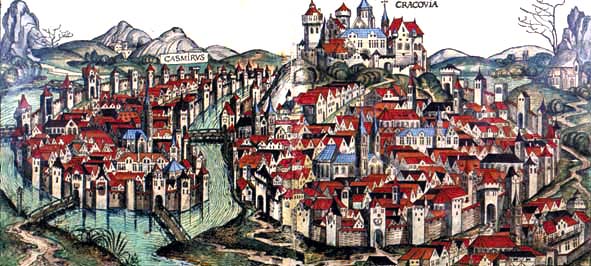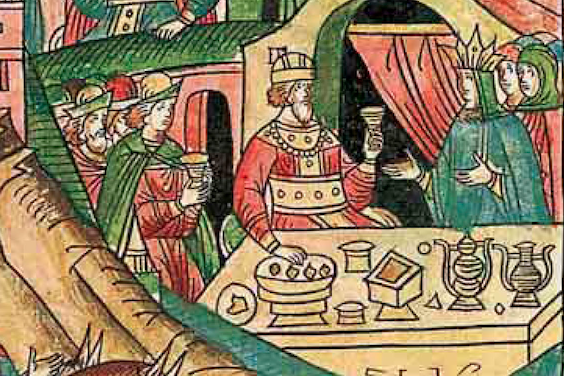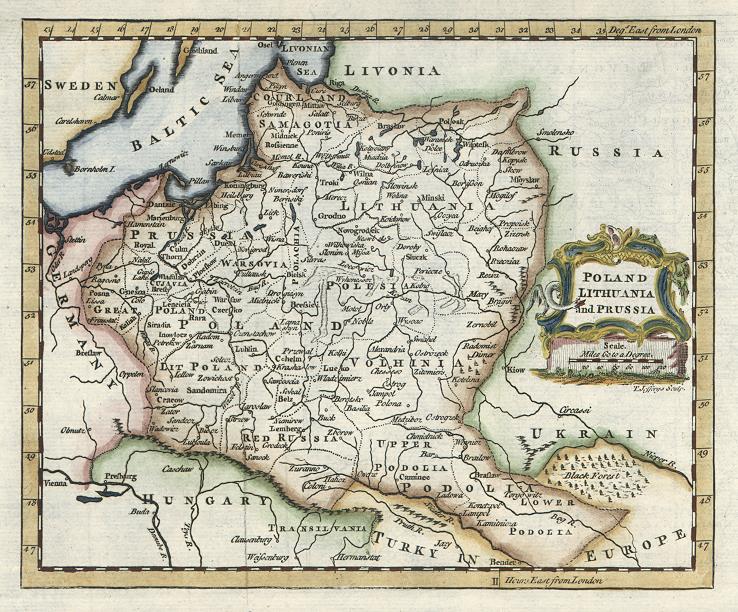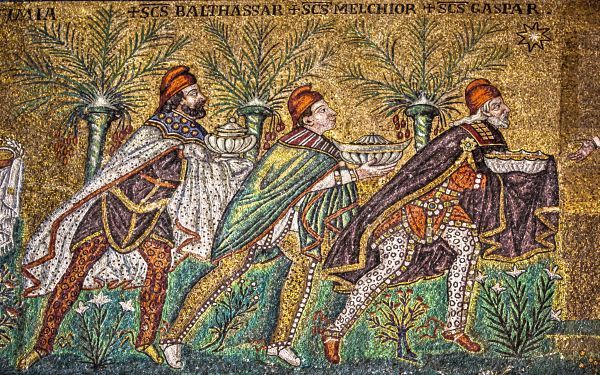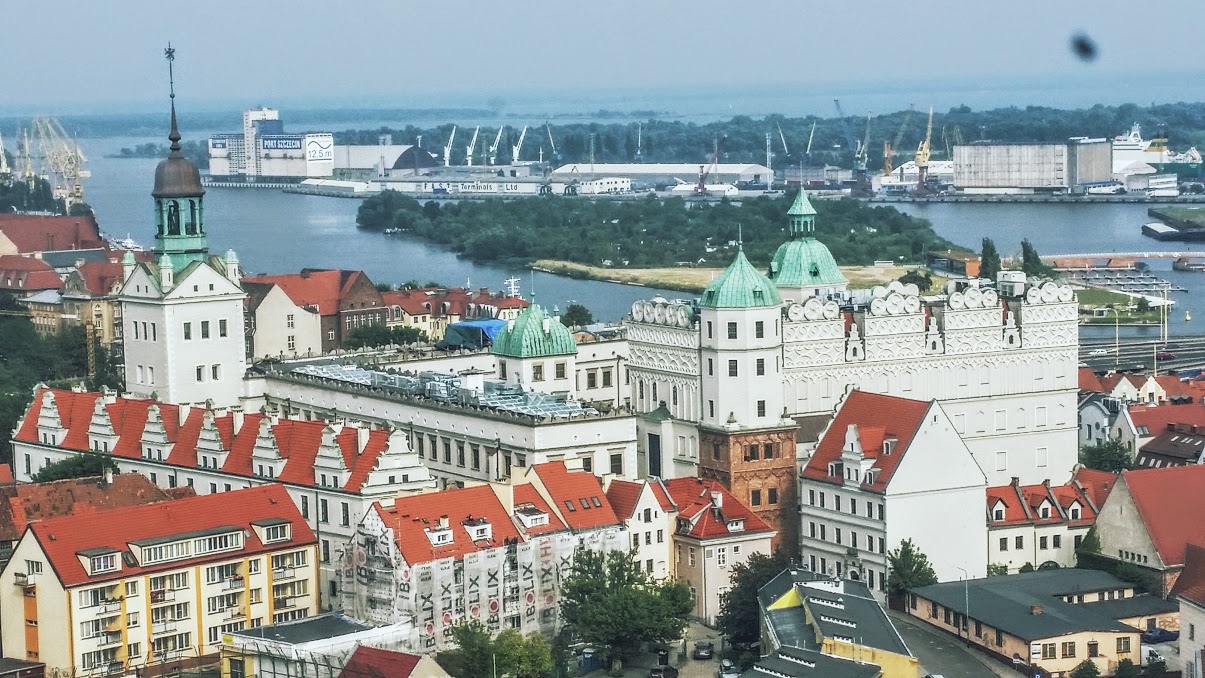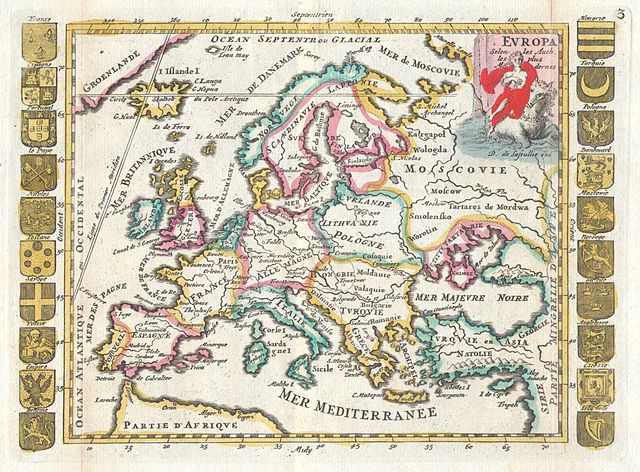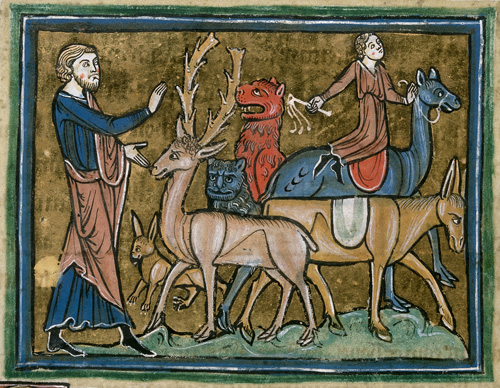Warrior’s tomb dating back to the 10th century discovered in Poland
The remains of a warrior buried at the end of the 10th century in an earthen mausoleum has been located in the village Bodzia in central Poland.
Laundry Ladies in Medieval Poland
Usually considered to be “women’s work”, this paper takes a close look at how laundry was done in medieval Poland, calling into question common historical stereotypes.
How the borders of Poland changed in the Middle Ages
Here are four videos that track the borders of Poland from the Early Middle Ages to the present day.
Crafts in Medieval Malbork. The state of research, and prospects for further study
The main idea of this article is to present the present state and the future of research on crafts in Medieval Malbork. As the capital city of the Teutonic Order’s state, Malbork is very interesting because of the castle in the town.
The remains of a victim of the Lithuanian invasion of 1354 discovered in the “Pompeii of Warmia”
Archaeologists conducting excavations near the Polish village Barczewko have discovered the skeleton of a man killed in 1354 during the Lithuanian invasion. This place is called the ‘Pompeii of Warmia’ because the ruins of the city destroyed during the invasion are preserved intact.
Survival at the frontier of Holy War: political expansion, crusading, commerce and the medieval colonizing settlement at Biała Gora, North Poland
In the southern Baltic, episodes of colonisation were accompanied by processes of military conquest, political subjugation and religious conversion.
Krakow, the Old Town – A Continental Venice
Surviving the destructions of the war, the old town of Krakow is a lesson of architecture and urbanism through the multitude of architectural styles, coherence and urban continuity.
Queen Jadwiga in history and legend: A contribution to the study of the XIV-XV century history of Poland
In spite of its biographic character, this thesis dwells on the various events in the life of the Queen, illustrating essentials of her personality, as well as the posthumous fame which so vividly remained in the tradition, and the present attempts to beatify the Queen.
History of Poland During the Middle Ages
The roots of the first Polish dynasty – the Piasts (from the 9th century to 1370) – came from Major Poland.
Vampire Burials in Medieval Poland: An Overview of Past Controversies and Recent Reevaluations
Recently, the sensationalist interpretations of deviant burials have also permeated into (inter)national media, leading the general public to misinformation about Poland’s past and the mentalities of its medieval societies.
Discovering a Lost Medieval Town in Poland
The 15th century city of Nieszawa, known by two names Nowa Nieszawa (New Nieszawa) or Dybów was a prosperous urban centre on the border of the Polish Kingdom and the Teutonic Order.
Epiphany: Three Kings Day
A look at the history behind Epiphany and Twelfth Night.
Czechs and Poles in the Middle Ages: Rivalry, Cooperation and Alliances
The article contains a description of the development of Czech-Polish relations in the Middle Ages.
Szczecin: Castle of the Pomeranian Dukes
My visit to Berlin included a quick stop across the border to Poland, to visit Szczecin and the Castle of the Pomeranian Dukes.
The Thirteenth Century International System and the Origins of the Angevin-Piast Alliance
The central question of this study is what inspired Charles I and Władysław Łokietek to establish a dynastic marriage in 1320 and in what context it happened.
The Remembrance of the Deceased in the Traditional Polish Culture of the Middle Ages
In the Middle Ages, Polish Christian holidays remained consistent, except for minor temporary deviations. They included the basic structure of pre-Christian rituals. Yet, traces of the old Slavic ritual calendar can be clearly identified in the Polish and Czech sources from the fourteenth- and fifteenth-centuries.
Christianisation of the Piast Monarchy in the 10th and 11th Centuries
Which facts testify to the beginning of the Christianisation process of a given country and which ones indicate its conclusion?
The Sumptuous Use of Food at Castle Marienburg (Malbork) at the Start of the Fifteenth Century
The prestige role of luxury food consumption was particularly visible during meetings of an international character: Teutonic-Lithuanian, Teutonic-Polish or Teutonic-Polish-Lithuanian, to which the grand master would come accompanied by the highest Order’s officials.
Ostsiedlung or Transition of German Law? Legal Perspective on Settlement According to German Law in Medieval Poland
Paper given at Twenty-First Annual Forum of Young Legal Historians – 6th Berg Institute International Conference
Middle Age Couriers: How Medieval Polish Manuscripts Turned Up in Milwaukee, and How They Got Back Home to Poland
Middle Age Couriers: How Medieval Polish Manuscripts Turned Up in Milwaukee, and How They Got Back Home to Poland Lecture by Neal Pease…
Environmental Crusading: The Teutonic Knight’s Impact After the Baltic Crusades
Environmental archaeologist and Professor of Archeology at Reading, Dr. Aleks Pluskowski, examined Malbork and several other sites across Eastern and Northern Europe in his recent paper, The Ecology of Crusading: The Environmental Impact of Holy War, Colonisation, and Religious Conversion in the Medieval Baltic. Pluskowski is keenly interested in the impact the Teutonic Knights and Christian colonisation had on the region. His ambitious 4 year project on the ecological changes in this area recently came to a close at the end of 2014.
Nourishment for the Soul – Nourishment for the Body: Animal Remains in Early Medieval Pomeranian Cemeteries
Late medieval sources clearly refer to souls, which in traditional folk beliefs were periodically returning to feed and warm themselves by the fires made by the living. This kind of conception can be merged with Slavic eschatology. There is multiple evidence to confirm that belief some form of spirit or soul was spreading amongst the people, who in the early medieval period, bordered directly with Pomerania.
Disputing Identity, Territoriality, and Sovereignty: The Place of Pomerania in the Social Memory of the Kingdom of Poland and the Teutonic Ordensstaat
This dissertation analyzes state-formation, the development of historical consciousness, and the construction of identities in medieval Europe.
Constructing memory: holy war in the Chronicle of the Poles by Bishop Vincentius of Cracow
The Chronicle of the Poles by Bishop Vincentius of Cracow is a twelfth-century history of Poland and a recognised masterpiece of medieval scholarship.
Characteristics of Medieval Artillery in the Light of Written Sources from Bohemia and Poland
Artillery appears in Central Europe at the end of the 14th c. and it starts playing a more significant role only in the next century.






